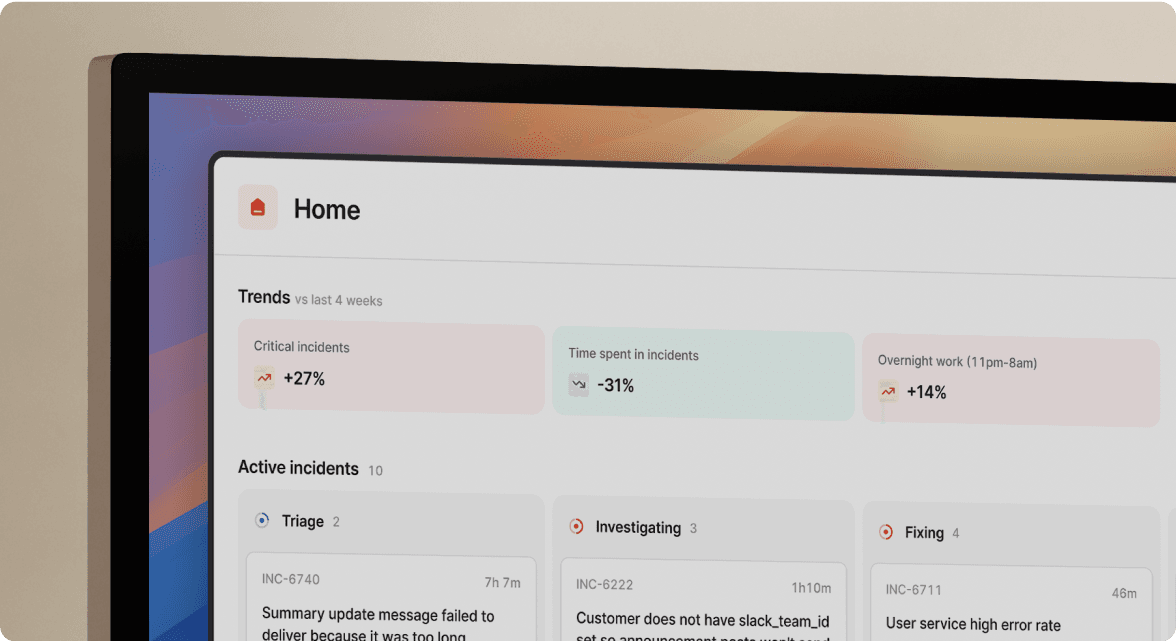Are organizations finding value in the incident metrics they track?

See the full report—Incident metrics pulse: How organizations are measuring their incident management
What metrics do you look at to measure how efficient your incident response is?
This is a question we get asked all the time and one we empathize with deeply. While there are several well-established incident metrics that organizations commonly use, like MTTR and raw counts of incidents, a vast number of them are ineffective, or worse still entirely misleading.
So we wondered how teams sorted through all of this noise to figure out which metrics would deliver the most insight and impact. To get some answers, we put together a simple survey:
Here’s what we asked world-class organizations such as Etsy, SumUp, and Ramp:
- What incident metrics do track within your team?
- What incident metrics do you report upwards?
- Do your incident metrics trigger you to take action?
- What metrics would you want if you had a magic wand?
Below is a quick preview of what we unearthed. But be sure to check out the full report to get the whole story.
👑 MTTx is still the workhorse of incident metrics
For an overwhelming number of responders, MTTx metrics are still the gold standard for tracking the efficiency of incident response—in particular, the DORA metric MTTR.
And this just makes sense. But if you dig deeper, there's a big problem with MTTR that can ultimately give you a total misrepresentation of the actual state of things at your organization.
🔗 There's a disconnect between upper management and teams
Are upper management and teams on the ground at odds with what makes the most sense to track? The survey responses suggest this is the case. For example, one responder mentioned that they track MTTD at the team level, but report up MTTD and MTTR. And this was a theme throughout the responses.
Much of what they report is the same, but teams will often tack on a few more metrics for management.
But why?
❓Why are teams tracking metrics but not actioning them?
While the majority of teams do take action on the insights they gather from their metrics, enough responders said "no" to get us thinking: why?
There are plenty of totally rational explanations here. Time is one. The idea of tacking on a bunch of follow-up actions onto an already loaded list of work can seem daunting.
However, consider the alternative: teams just aren't finding the metrics they track all that useful.
💰 How much do incidents cost?
Today, optimizing for cost is everything. The problem is that figuring out exactly how much an incident costs your organization can be a big challenge. So when asked what they would want to track if they could, several responders mentioned cost or financial impact.
Given the era of hyper-competition that we currently find ourselves in, this is going to be top of mind for many organizations across the spectrum.
You can download the full report by clicking on the image below.

See related articles
So good, you’ll break things on purpose
Ready for modern incident management? Book a call with one of our experts today.

We’d love to talk to you about
- All-in-one incident management
- Our unmatched speed of deployment
- Why we’re loved by users and easily adopted
- How we work for the whole organization



